ZAG Skis Overview
The other Chamonix based ski company—ZAG, hasn’t had the same presence in the U.S. as its younger counterpart, Black Crows. Travel elsewhere: Chamonix, British Columbia, Argentina, for example, and ZAG has a strong following among dedicated and accomplished skiers. From their headquarters and prototyping lab in Argentiere, their impressive sustainability efforts, as well as multiple Freeride World Tour wins on their skis, ZAG has a compelling story.
Perhaps I’m being swindled by some good marketing, but this video of the prototyping process, including heading up the Grand Montet to test the new prototypes really struck a chord. The process of prototyping and testing in such an efficient and agile manner, in addition to the world class testing grounds of the Grand Montet and legendary steeps above the Argentiere glacier, should allow ZAG to refine and verify their designs more effectively than the bigger ski brands.
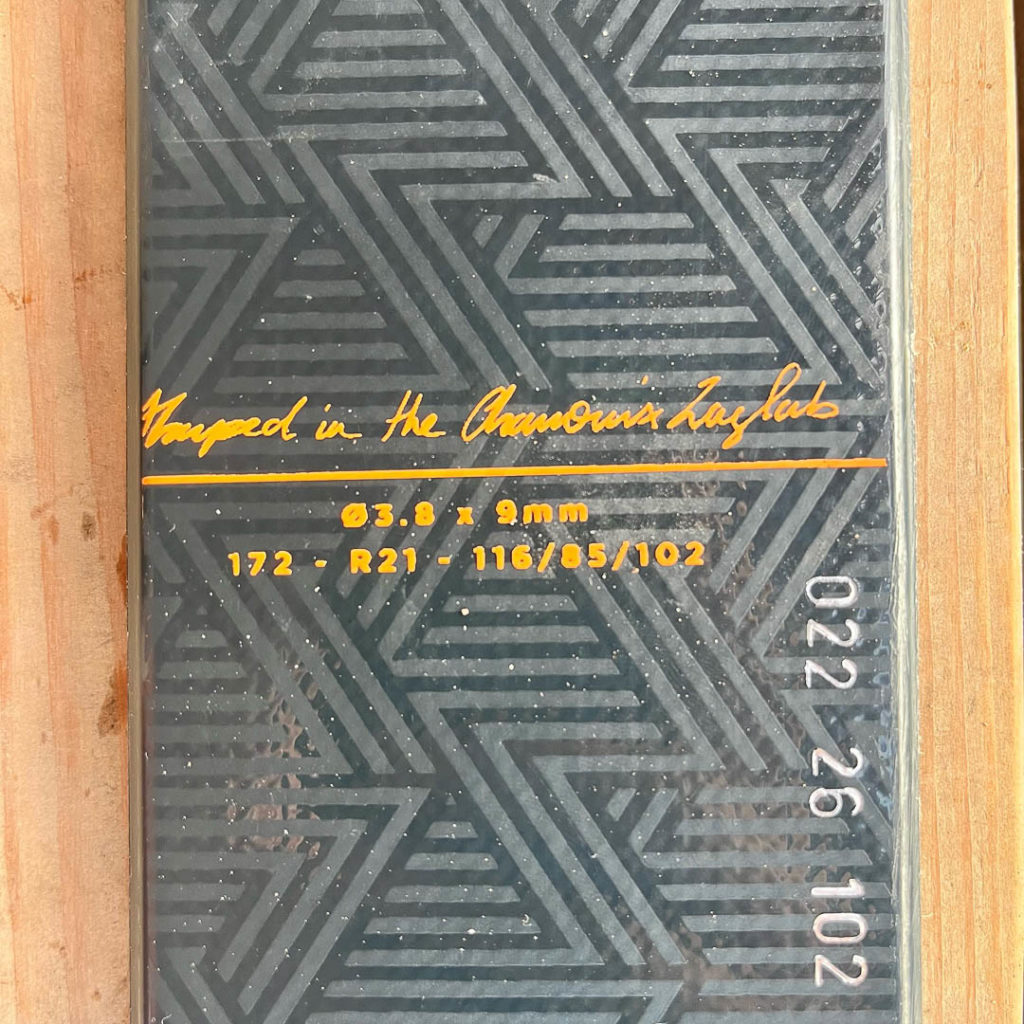
In addition to their Chamonix valley roots and cool French mystique, ZAG’s sustainability efforts are impressive. Their ZAGREEN Program initiative began in 2015, and incorporates more sustainable and locally sourced materials into their manufacturing process. From bio-based resins and topsheets to recycled metal edges, ZAG seems to be making a strong effort to minimize their impact. A nice touch was mostly plastic-free packaging, with a muslin bag protecting the skis—the bag came with instructions for upcycling the fabric into a tote.
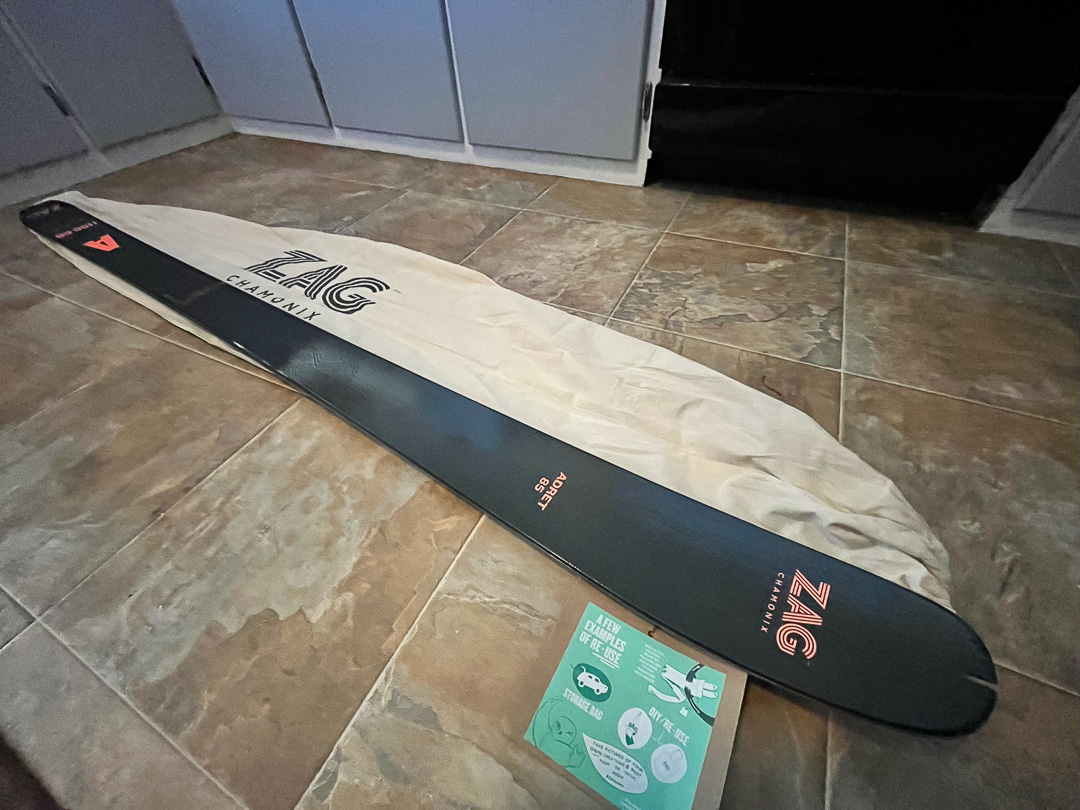
On to the skis themselves—for touring, ZAG has two lines: Adret and Ubac. I can’t say I wondered much about the names, or had any inkling that they had some deeper meaning, until flipping through a glaciology textbook at a teacher-friends house last spring.
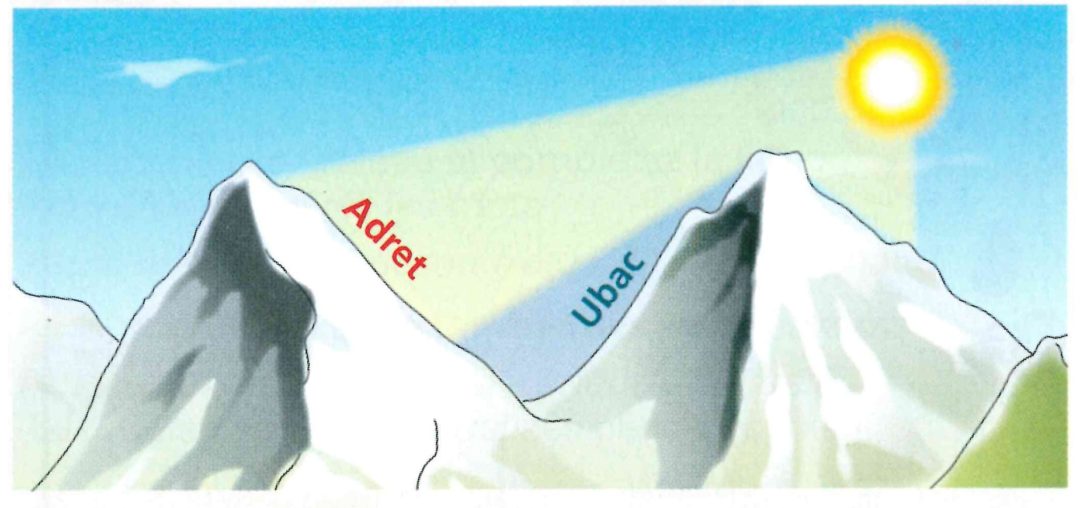
As the photo above illustrates, Ubac is the shady side of a valley/slope, while Adret is the sunny side. OK, back to the skis. The UBAC line is more powder snow oriented with more rocker and wider models. The Adret, on the other hand, is for the sunny side of the valley, with narrow waists, lighter weights, and generally firm/spring snow oriented shapes. The Adret 85 caught my eye as an interesting small and light ski with the potential to do well (relative to its size and weight) in more variable or challenging conditions. I tested the Adret 85 in a 172 cm length throughout winter 2023 with a Grizzly Olympic Binding and Dynafit DNA boots.
Adret 85 Design Highlights
The Adret 85 fits an interesting niche amidst skinny and light skis. I hesitate to call any 1100g ski “hard-charging,” but relative to its class, the Adret is quite capable at speed and in variable snow. From the inside out, the Adret starts with a Paulownia wood core, wrapped in multiaxial carbon/fiberglass and capped with a phenol reinforcement in the mountain area. Paulownia and carbon—pretty standard fare at this point. The phenol reinforced mounting area is interesting to me. I certainly prefer a metal mounting plate—something about a tapped hole through metal gives me warm fuzzies. That said, I didn’t have any issues with stripped holes or the like—the phenol plate seemed to have a solid bite with screws. A 3.8x9mm bit was recommended. I used a 3.6x9mm as that’s what I had on hand.
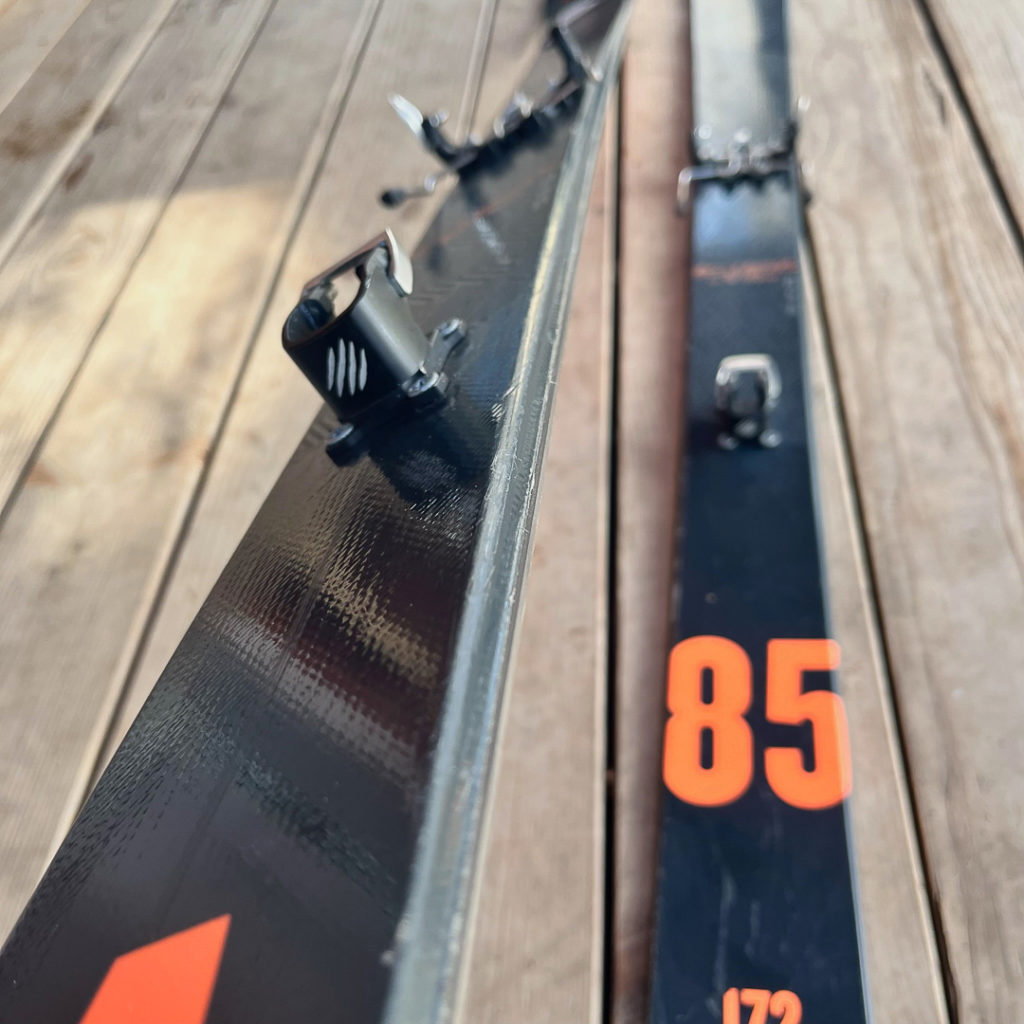
Moving outward from the core construction, the Adret has a full cap construction—no sidewalls here. We generally think of a full sidewall as an advantage for both durability and torsional rigidity. While I haven’t had notable issues on either front, these compromises are certainly present. Another aspect of the durability conversation is the edges. The Adret uses quite skinny steel in the edges, and stops the edge ~15cm short of the tip. This tactic is pretty normal on bigger, longer, more rockered skis. A light tip reduces swing weight and doesn’t compromise edge hold, as that part of the ski won’t touch snow when things get firm. The lack of tip edge is a significant durability concern, in my experience. Not only does it leave the tip more vulnerable to damage and delamination, it also presents the opportunity to rip out the edge where it begins. Aggressively rounding the last few cm of edge hopefully prevents it from getting snagged, but I am a bit worried about this vulnerability. The tip also sports a nicely sized notch that secures a 1⁄8” bungee tip. The tail, in contrast to the tips, features a nice beefy plastic tail protector that extends ~3cm or so into the tail of the ski and feels really solid with plenty of material to notch for tail clips if one desires.
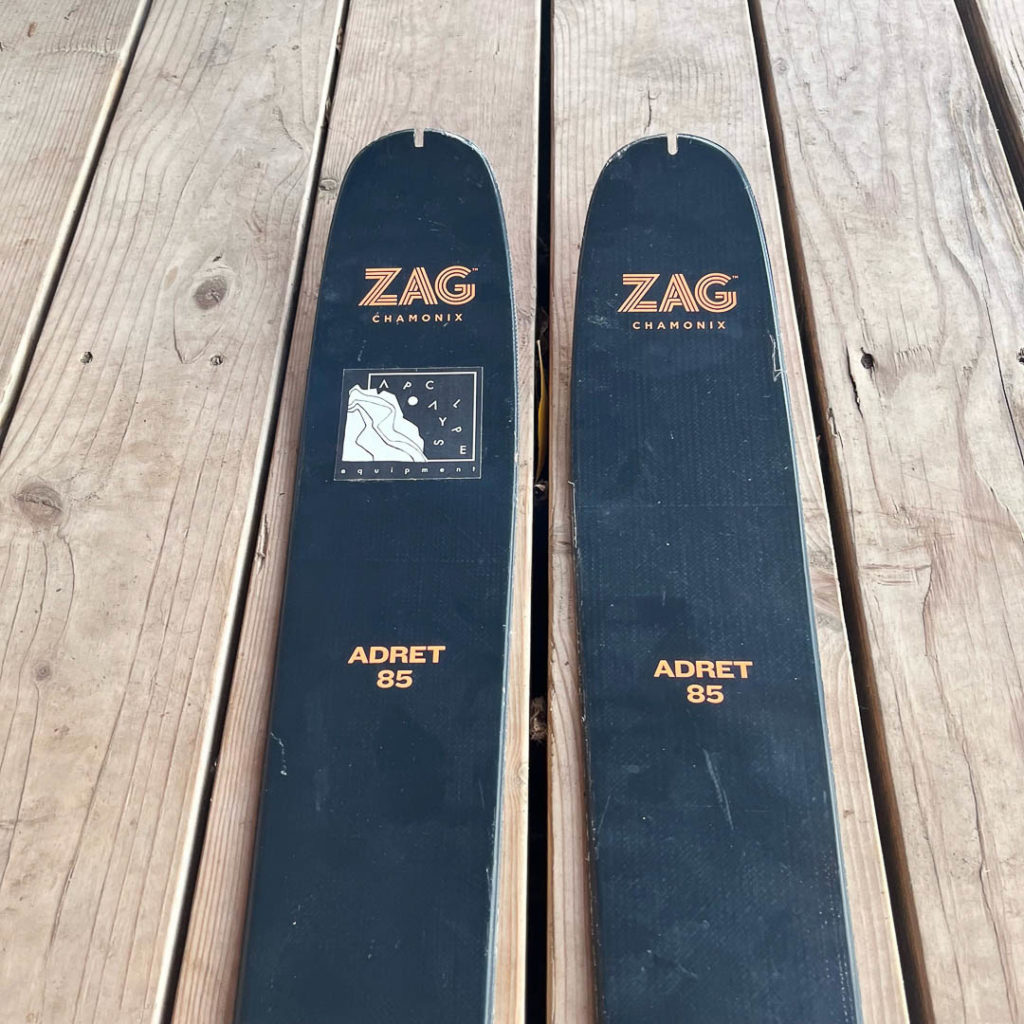
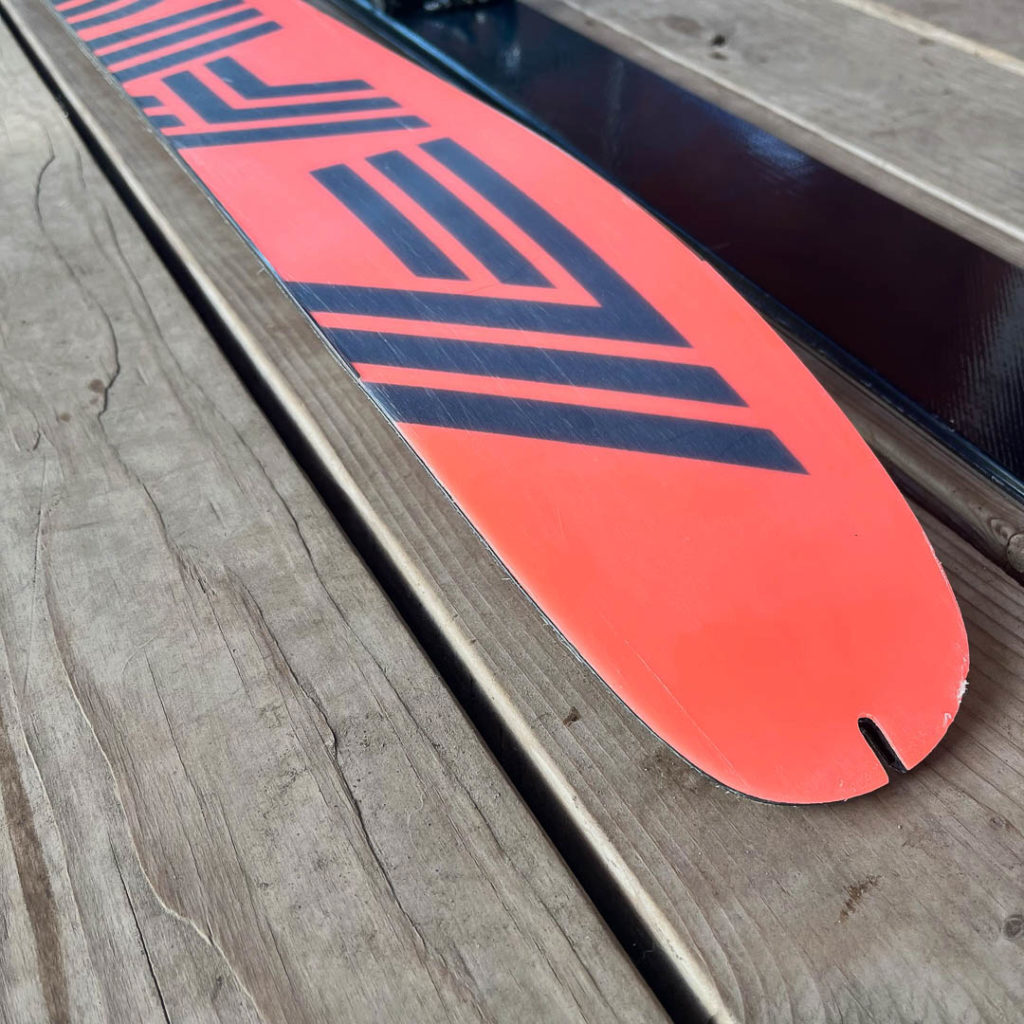
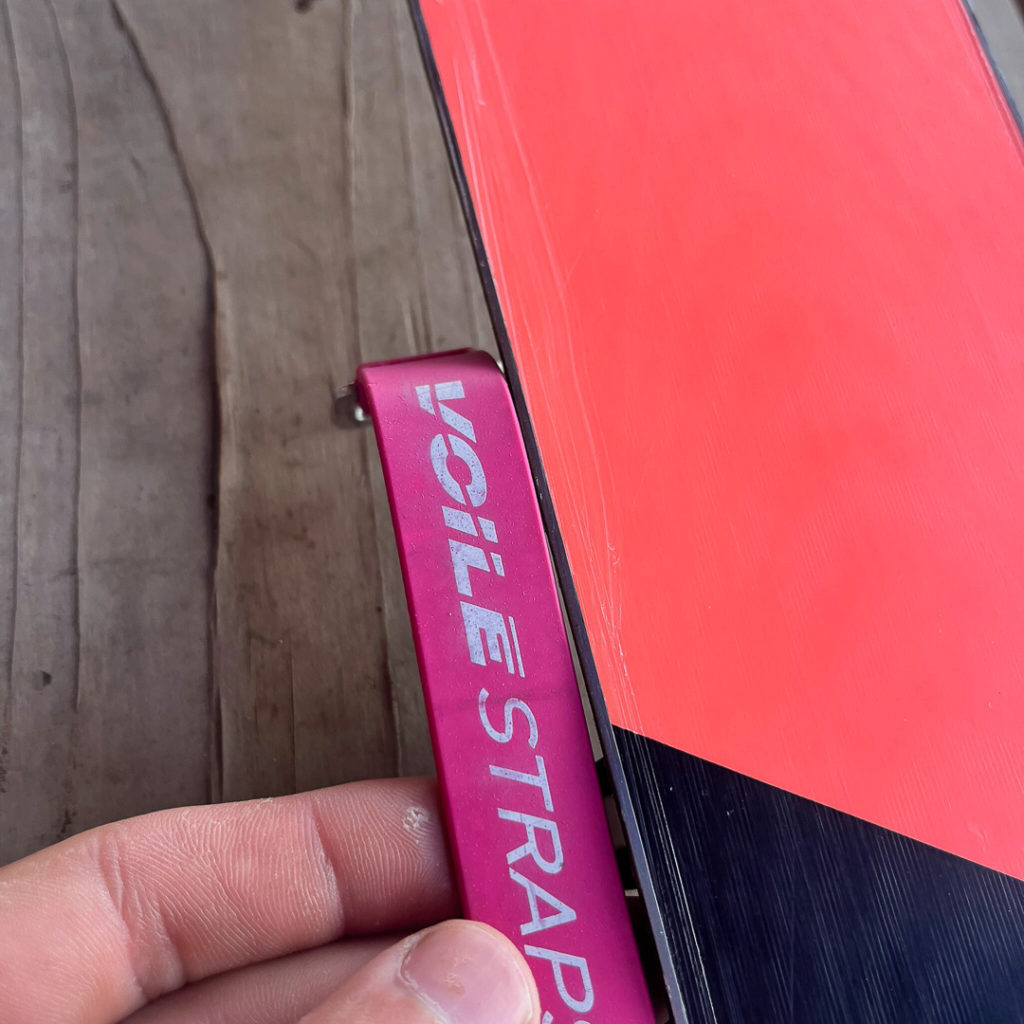
As far as shape goes, the Adret adds a bit of modern powder ski design to an otherwise traditional design. A long, low slung camber pocket extends from just ahead of the tail to 27cm behind the tip, where the tip begins to rise rather abruptly. The widest point of the tapered tip is just in front of the start of the rockered section, about 20cm from the tip. ZAG calls the radius 20m, while also advertising a multi-radius shape (tighter underfoot, straighter tips and tails). It’s a bit hard to decipher beyond what is stated–but most importantly, the sidecut seems to strike a nice balance between not being hooky and feeling reasonable to carve on groomers without too much input or pivoting. The tail is more or less flat, with an ever so slight upturn in the last 5-7cm, perhaps enough to keep it from augering too aggressively in a reversing maneuver.
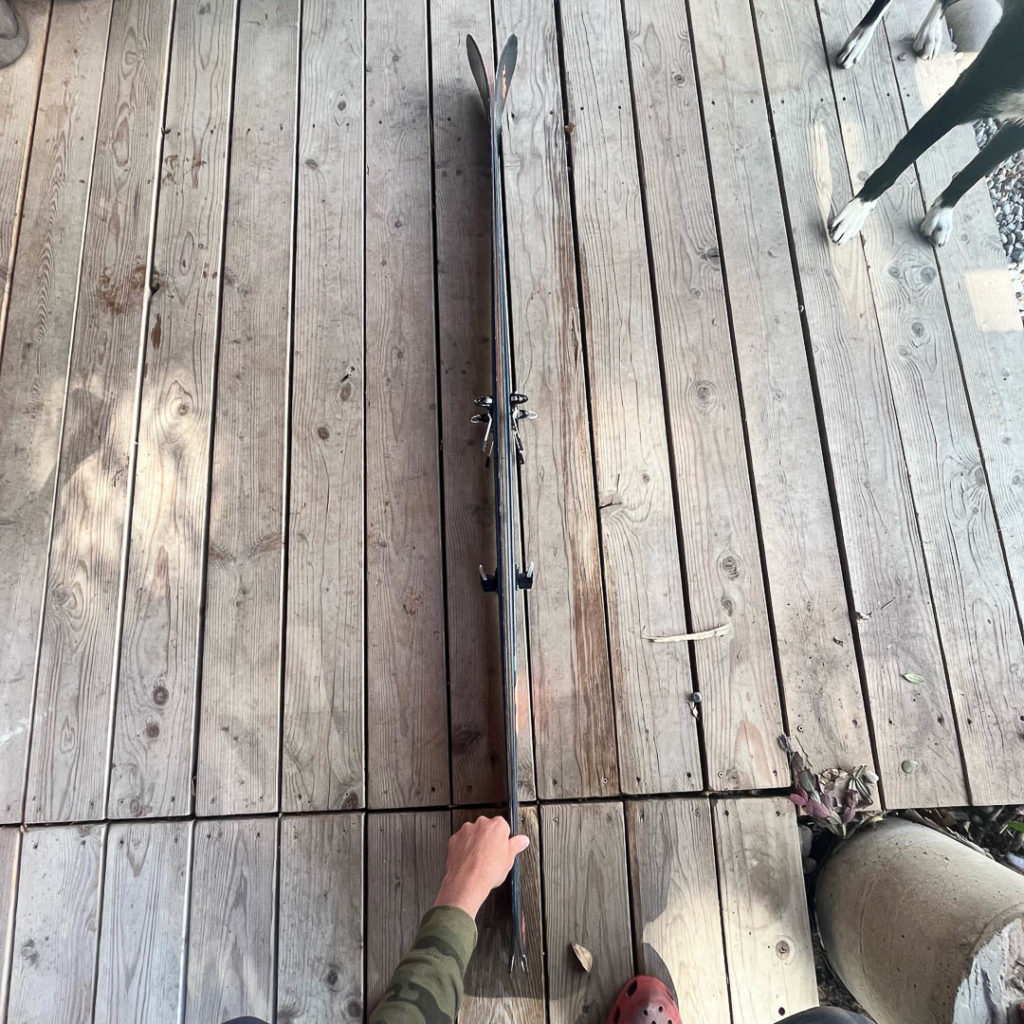
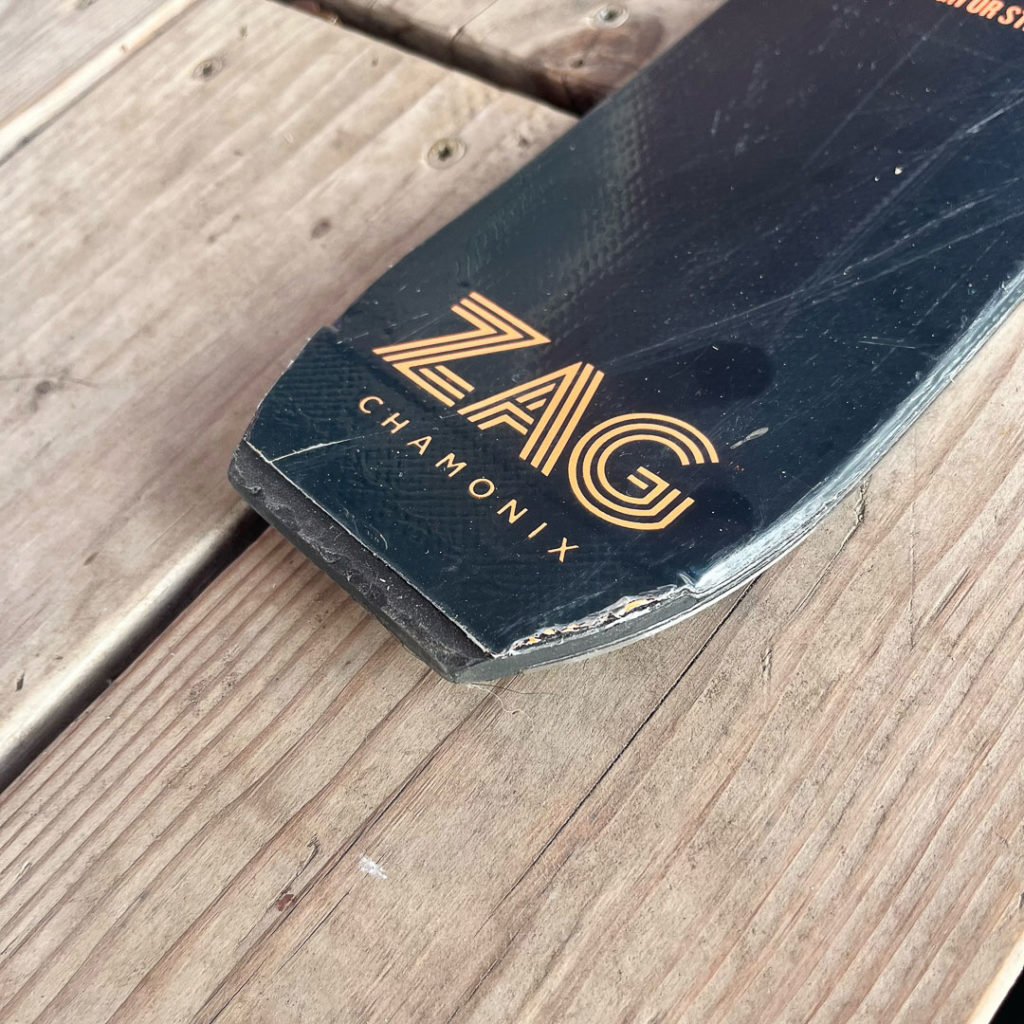
The vibe of playful in the tip and business in the tail carries into the flex pattern as well. The tip is medium-soft and deflects a bit in chunky snow or at high speed; then things progressively stiffen as you move underfoot and into the tail, which is quite stiff for such a svelte ski. Torsionally, the Adret is medium stiff. It’s no noodle, and, as you’ll read below, has some real chops on steep, firm snow.
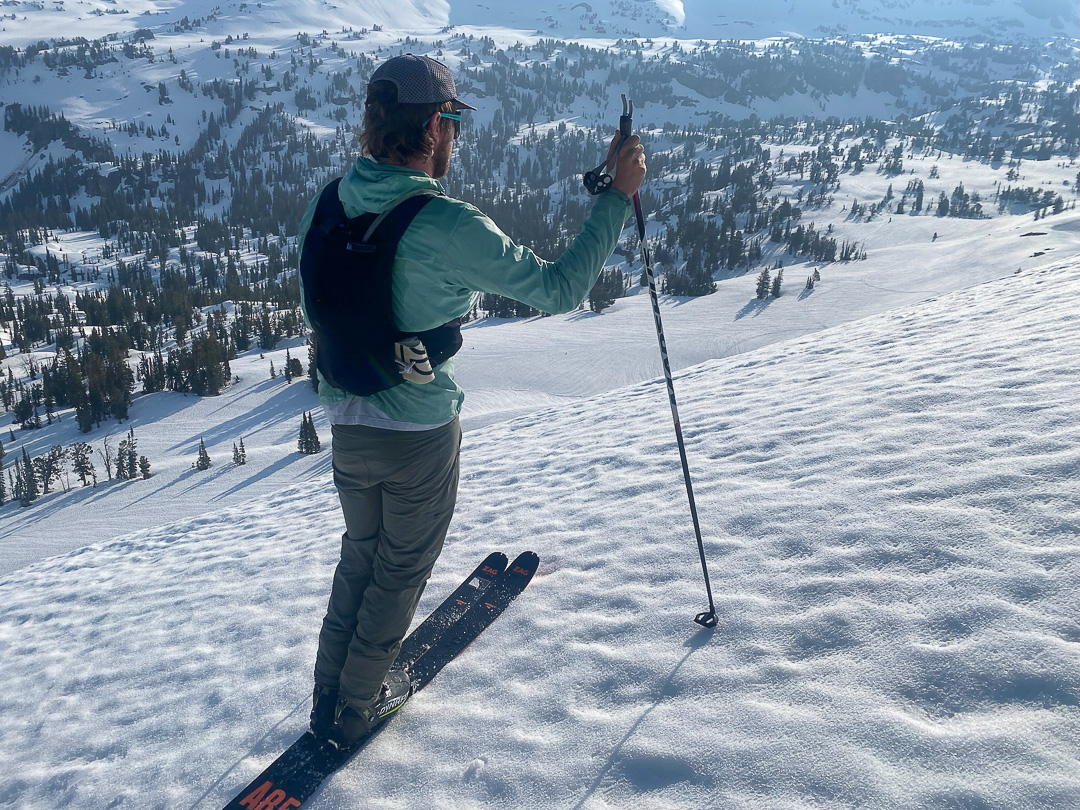
This formula worked out really well for my purposes. Throughout the winter, I used the Adret for resort skinning throughout the winter, some “fitness” laps on Teton Pass during some drought periods, and then brought it out for big days of traversing, steep skiing, and corn laps in the spring.
Field Testing the Adret 85
Powder/soft snow
I’ll be honest and say that I didn’t have the heart to bring the Adret out on any of the incredible powder days we had last winter, so I can’t comment on how they might perform on super deep days. I did get them out for a few days with a skiff of fresh snow or settled boot top powder. I’m not here to tell you they are the best or most fun pow skis out there–but relative to their size, the tip rocker and taper are very helpful when the snow gets soft.
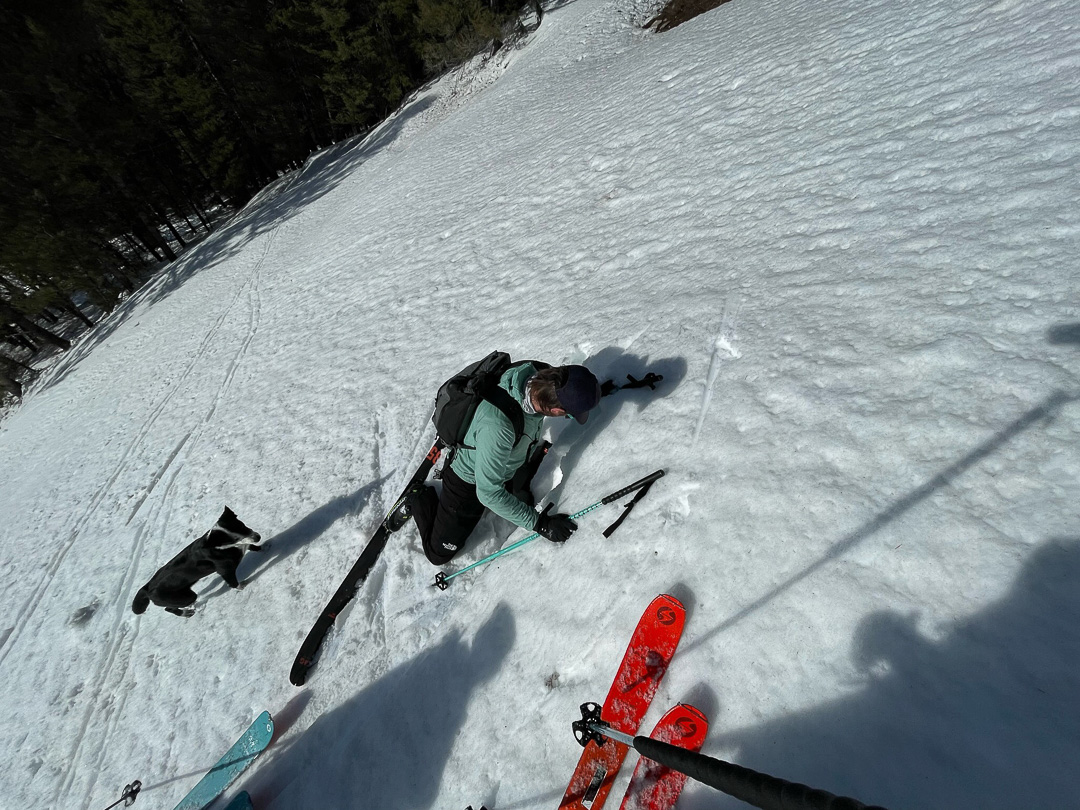
Often, short and skinny skis like this are what I would describe as bottom feeders in soft snow. They find the firm beneath the soft and stay planted on it—planing speed can be hard to achieve confidently due to their lightweight and lack of stability. The other common characteristic of similar skis- the Blizzard Zero G 85 stands out, is feeling grabby or hooky in the tip in softer snow. The combination of a little rocker and taper seems to contribute to this feeling of the tip getting pushed around or engaging unpredictably as it attempts to slice through fresh snow. The Adret, thankfully, didn’t suffer from this phenomenon. They floated okay in shallow/settled snow, and the tapered tip engaged in a predictable manner that gave me much more confidence at speed in these conditions than felt “normal” on similar small skis. While I haven’t skied the 85mm iteration, I imagine the Atomic Backland 85 UL has performs similarly in these conditions, owing to the rocker and HRZN Tip.
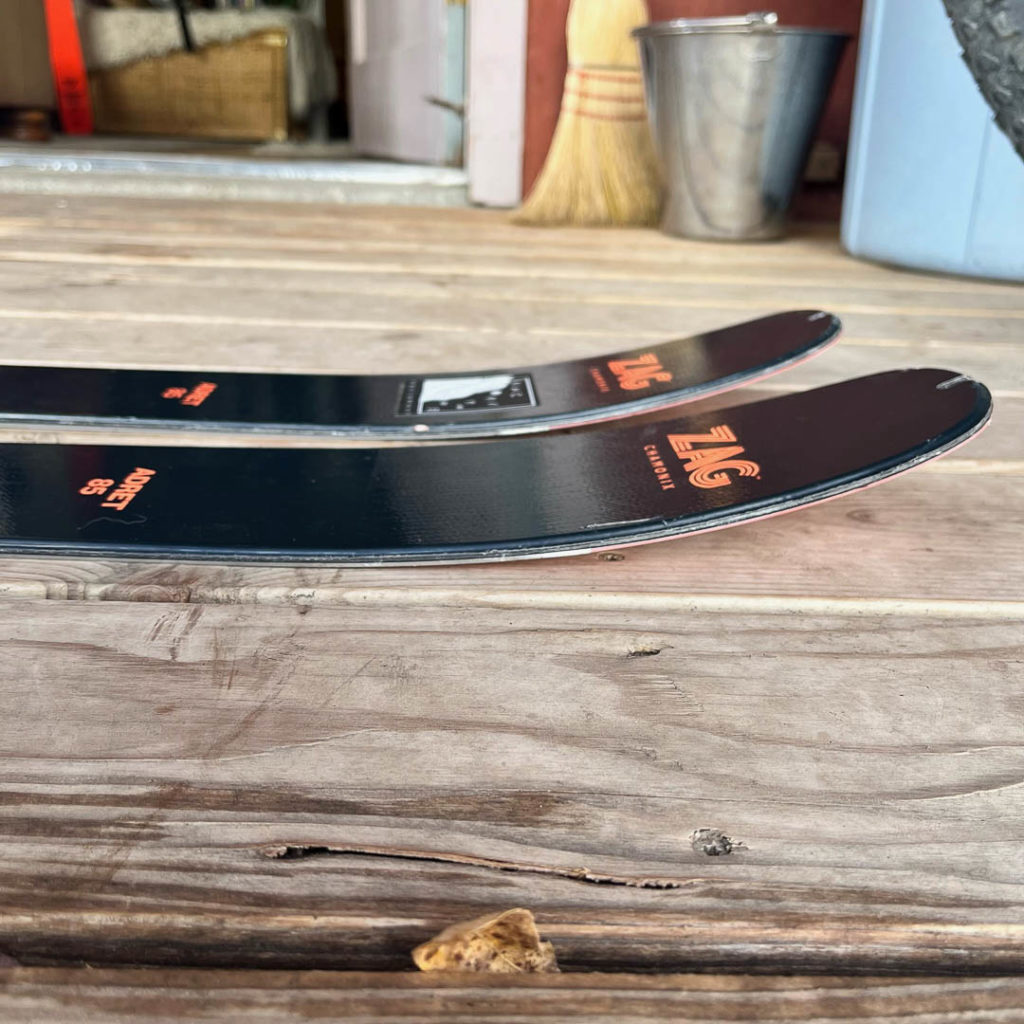
Crud/tracked/variable snow
Variable, 3D snow is generally where skis in this 1000g weight class tend to really falter. I’m not here to tell you that the Adret defied physics here. Mass is the ultimate “solution” to these more challenging snow conditions. Within the subtleties of what is generally a challenging experience—skinny, light skis and bad snow, the Adret performed admirably. I enjoyed a number of runs throughout the season in some pretty terrible conditions: refrozen, breakable crust, heavily tracked, you name it. I’ll continue to credit the soft-ish, tapered tip here, and better than expected dampness. Skiing in bad conditions often felt like a bit of a challenge of how fast/aggressively I could manage, rather than what can often feel like full survival skiing on less forgiving ultralight skis. I’ll admit to some particularly desperate survival skiing while trying to ski some unpredictable breakable crust whilst hopelessly hypoxic during an attempt on a quick linkup. I’ll chalk that up to poor decisions on my part.
Firm Snow/Couloirs
As an 85mm mountaineering marketed ski, the Adret comes with the expectation of excellence in firm conditions. The medium-long radius (21m), flat tail, and significant camber add up to a nice bite in firm snow. Underfoot and in the tail, the Adret feels quite stiff. The tip is medium/soft. On the other hand—the cap construction has medium torsional rigidity. This stiffness recipe feels relatively confident and well “adhered” on most firm, steep snow. It isn’t the same scalpel-like precision and rigidity of something like an older Zero G 85, but it certainly gets the job done. The mount point is further back than I generally prefer for steep skiing, at -10cm, but the Adret felt so flickable and maneuverable that I never felt like I was set way back and the tails felt plenty supportive and locked in relative to the rest of the ski.
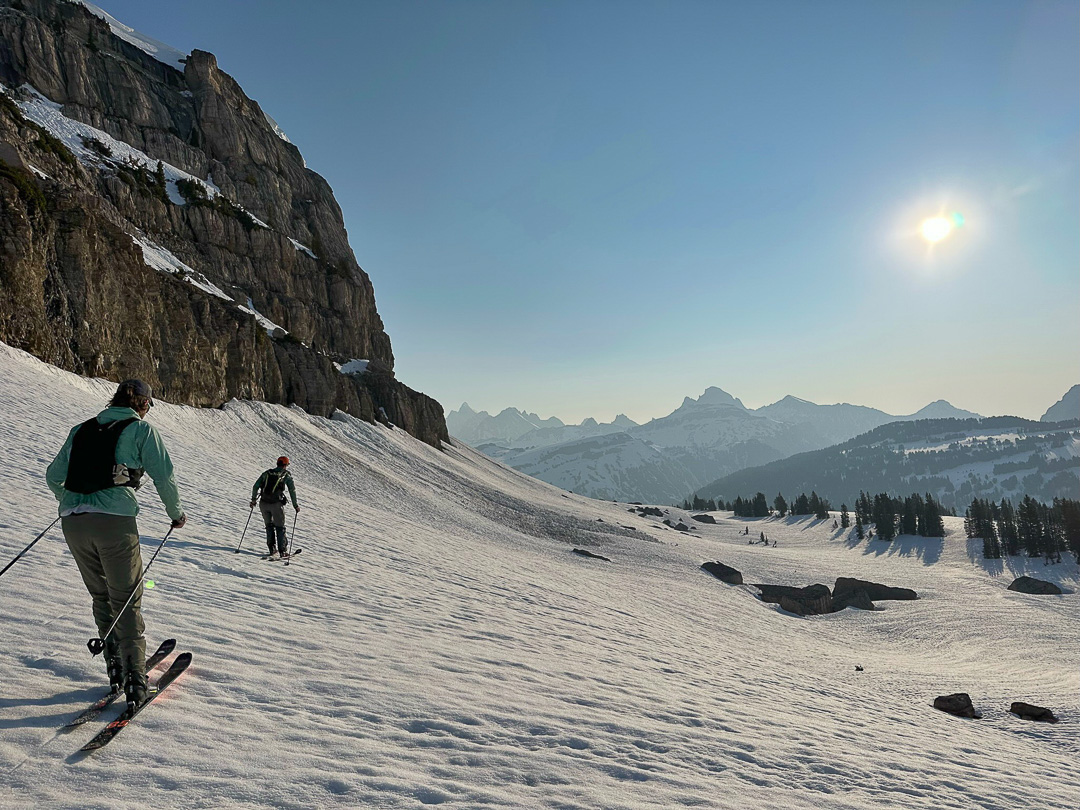
Resort Skiing/groomers
Here in the Tetons, our resort skinning access is all at the town hill, Snow King Mountain. I am lucky to get out on Snow King a few afternoons a week with the local kids’ backcountry program. This afforded me lots of opportunities to test the Adret in the resort environment. Groomers at “The King” are generally quite steep and often firm. As with many light, longer radius skis, clean carved turns quickly get a little out of hand as the skis feel like they want to run away down the fall line—a horrifying prospect on 1100g skis. It felt pretty easy to feather the tails into a bit of a slide to control that need for speed dictated by the radius. The tails felt forgiving, and stayed engaged and out of the back seat—even paired with race boots. My broad opinion is that just about anything will work fine for resort skinning, and while I would probably go for a shorter radius in a dedicated resort fitness ski, the Adret was plenty enjoyable in this role.
Final Thoughts on the Adret 85
Especially for those of us who spend much of the winter on significantly bigger, heavier touring skis, it’s easy to generalize that all these small, light, mountaineering skis are “about the same.” While there isn’t the same variety of 85mm touring skis as, say, 105mm touring skis, the nuances among the various options are still important when considering the options. The Adret 85 fills an interesting niche in this world— they aren’t steep skiing, mountaineering machines. Instead, they are balanced, capable, and, dare I say, pretty darn fun. They are an excellent tool for when a light and maneuverable ski is in order, but there is still ample opportunity for fun skiing. Think spring traverses, on or off piste fitness laps, or perhaps mountaineering trips where skiing isn’t the main objective. A parting phrase, as is requisite for core French ski companies… “Climb high or stay home.”
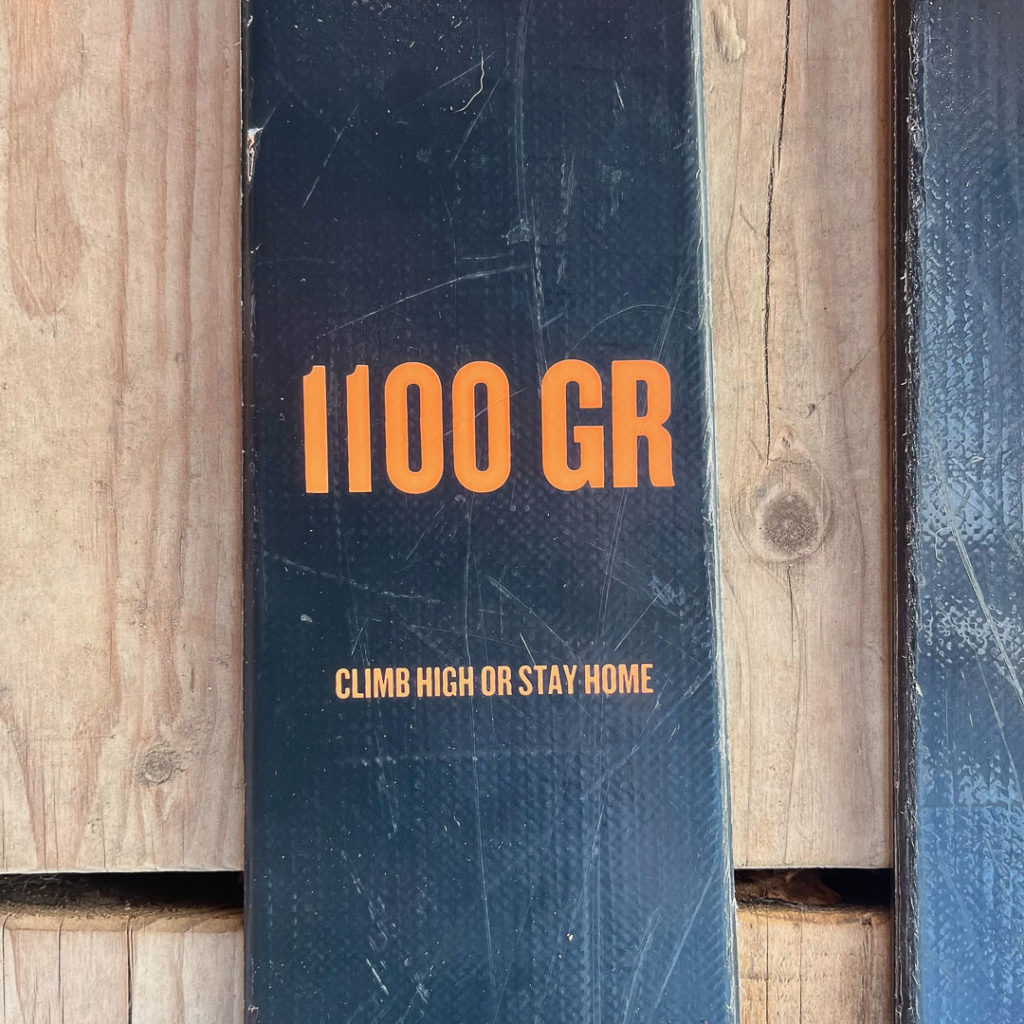
ZAG Adret 85, 172 cm Metrics
Available lengths (cm): 166, 172, 178
Dimensions (mm): 116-85-102 [172]
Radius (m): 21
Mass (g): Claimed: 1100g [172]
Mount Position (cm from center): -10cm
Construction Highlights: Paulownia core, cap construction, phenol reinforced mounting area
Shape: Relatively long radius, tapered tip
Profile: Rockered tip, long and low camber, flat tail with slight early rise
Binding & Boot Pairing Tested: Mounted with Grizzly Olympic bindings, Dynafit DNA boots
Similar Models: Dynastar M-Vertical 88, Atomic Backland 85 UL, Dynafit Blacklight 88
MSRP: $949






Leave a Reply
You must be logged in to post a comment.